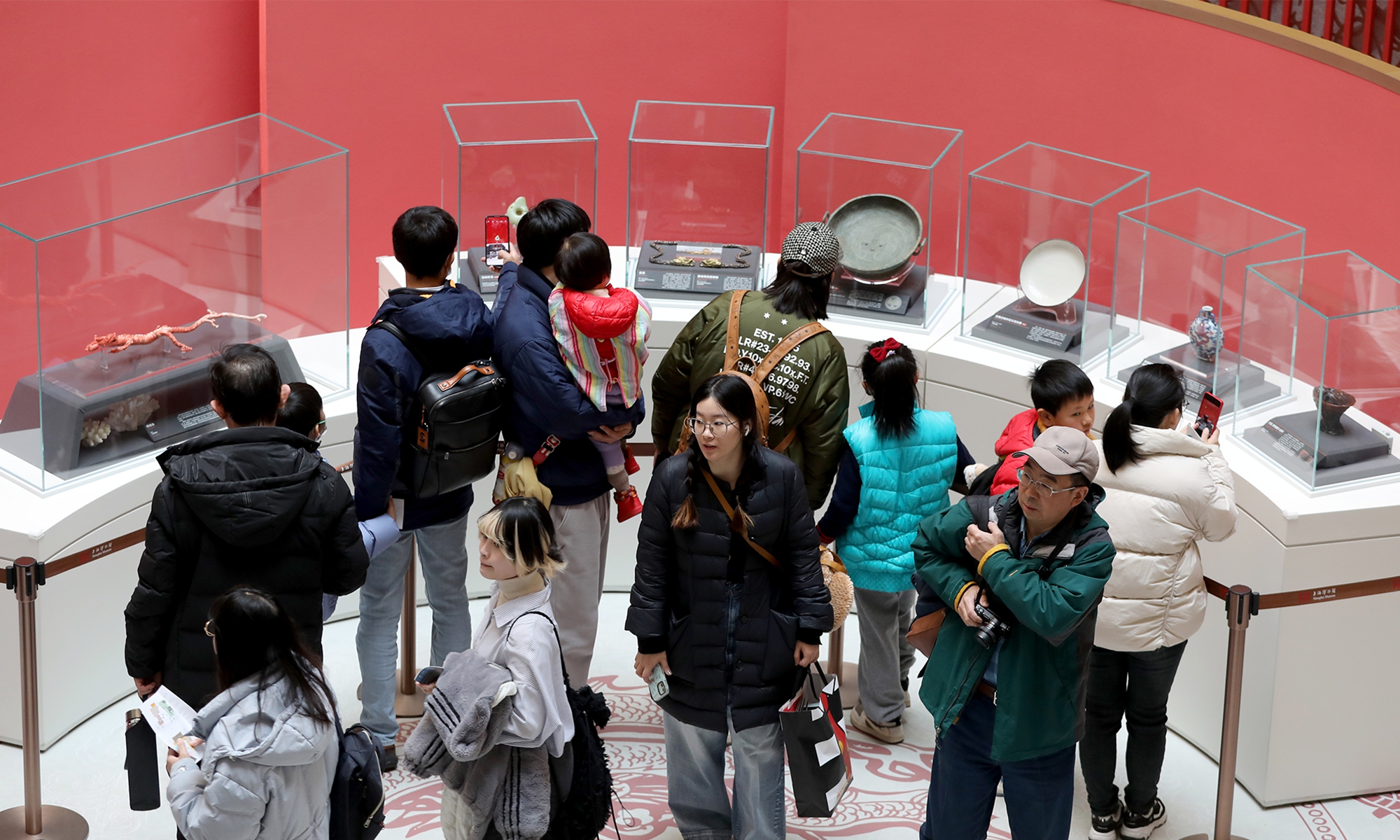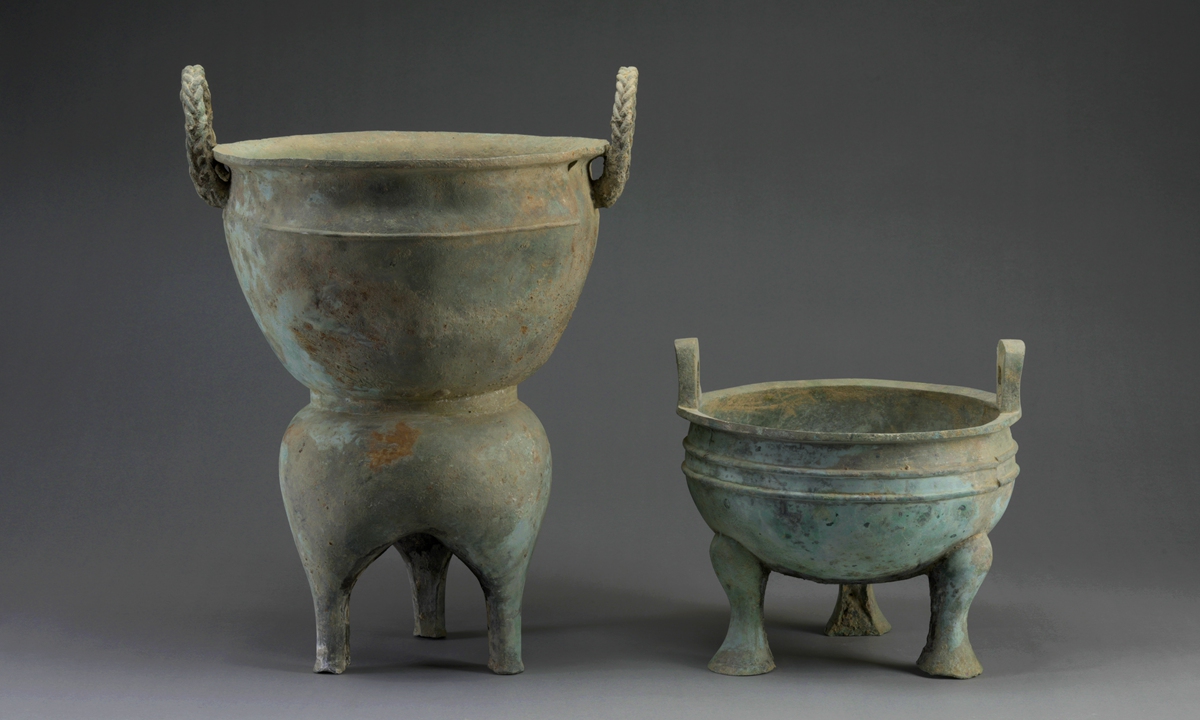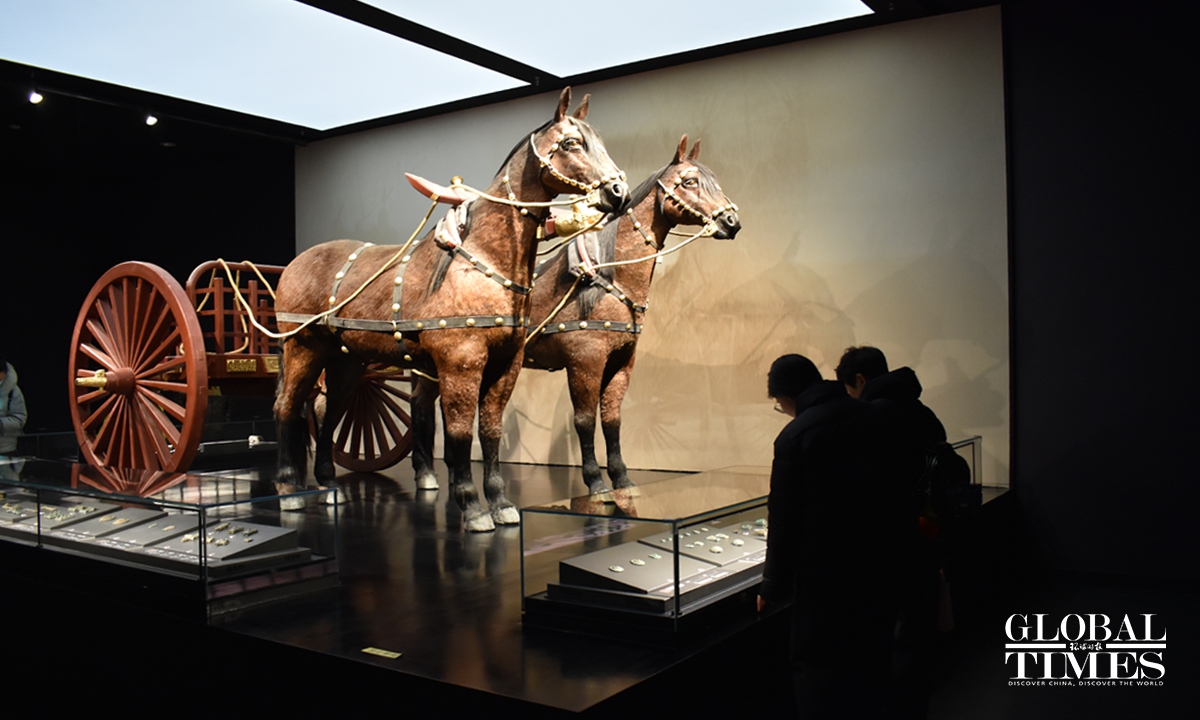Continuous efforts taken to bring relics to life in past decade
Passing down civilization
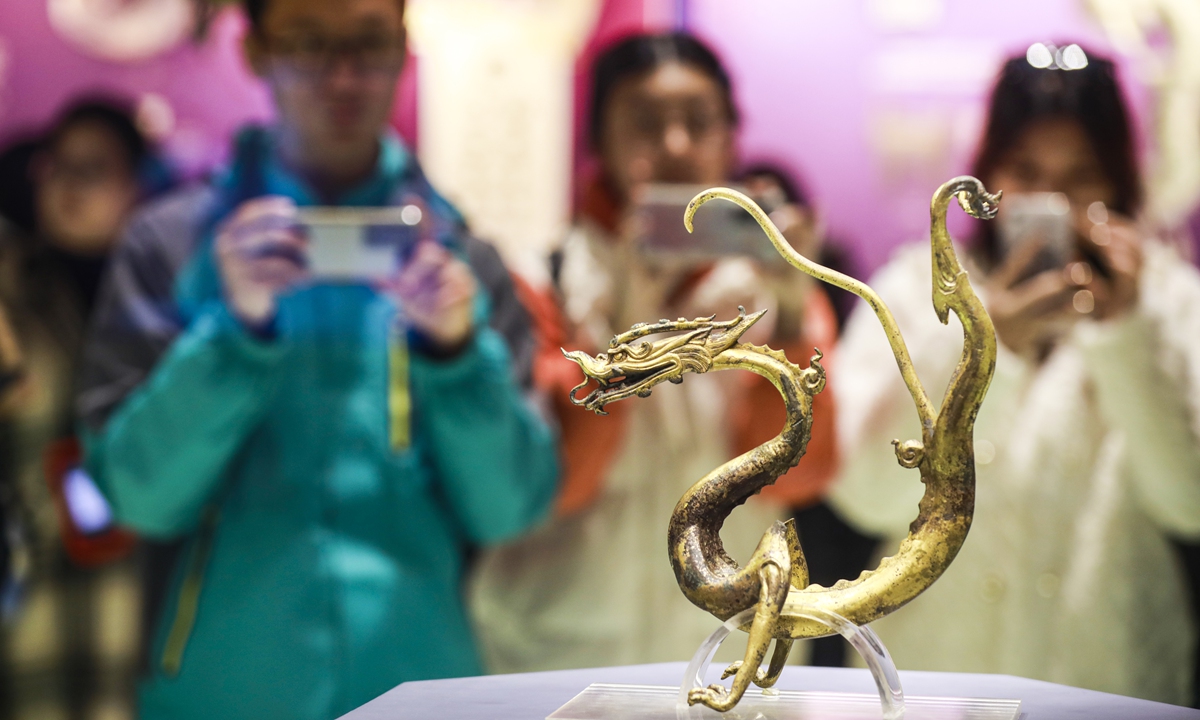
Visitors take photos of a bronze dragon in the Shaanxi History Museum in Xi’an, Northwest China’s Shaanxi Province. Photo: VCG
For the Palace Museum in Beijing, online reservations are usually booked up immediately. At the Shaanxi History Museum in Northwest China's Xi'an, the average number of clicks on ticket reservations per day exceeds 600,000. A cultural heritage exhibition featuring Chinese writing held at the Chengdu Museum in Southwest China's Sichuan Province in 2023 attracted more than 400,000 visitors within about a month…
Currently, the "museum craze" among young people continues to heat up. In addition to visiting museums in person, on social media, more and more young people are sharing their experiences of visiting museums and appreciating cultural relics. Virtual exhibitions and short videos related to museums are highly sought after as well.
Chinese President Xi Jinping gave a speech at the United Nations Educational, Scientific and Cultural Organization (UNESCO) Headquarters in March 2014. "We need to inject new vitality into the Chinese civilization by energizing all cultural elements that transcend time, space, and national borders, and that possess both perpetual appeal and current value, and we need to bring all collections in our museums, all heritage structures across our lands, and all records in our classics to life," Xi pointed out in the speech.
On the 10th anniversary of the speech, a look back at China's efforts and commitment to bring collections to museums, and heritage structures and classics to life across all levels, might help us better understand the current museum craze.
In 2021, the General Office of the State Council released a plan for the preservation of cultural relics and related technological innovation during the 14th Five-Year Plan period (2021-25). China pledged to comprehensively improve its level of cultural relic preservation and attain a substantial increase in its technological innovation capability in the field by 2025, according to the document. In May 2022, the office issued opinions on promoting the implementation of the national cultural digitization strategy, clearly proposing to make full use of cultural and educational facilities such as museums and build offline scenes for digital cultural experiences.
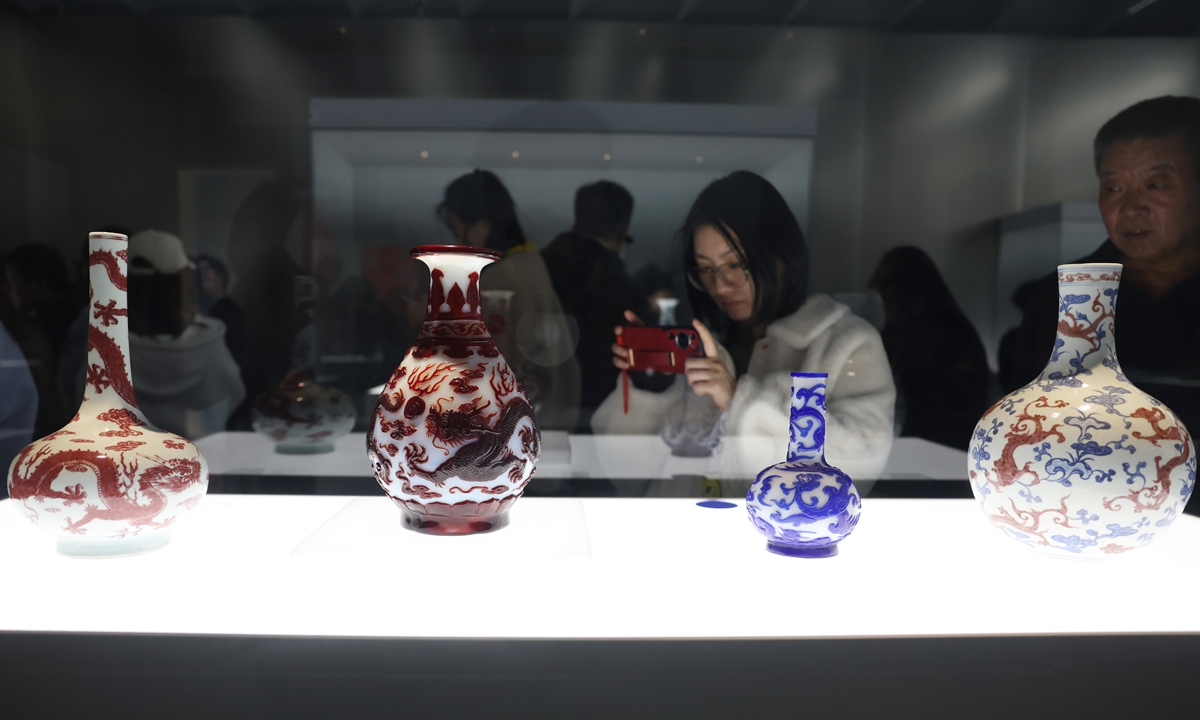
A visitor explores an exhibition of glass artifacts from the Palace Museum at an art center in Beijing. Photo: VCG
Drawing the young crowd
Documentaries, variety shows, digital IPs, mini-programs and apps, various online and offline interactive activities, "cultural and creative products" ... In recent years, cultural relics and museums have continued to attract public attention through innovative means, bringing the cultural relics collected in museums to life.
After nearly a year of preparation, a digital exhibition featuring a rhino-shaped bronze wine vessel opened to the public at the National Museum of China in July 2023. The Western Han Dynasty (206BC-AD25) rhino-shaped bronze wine vessel, made of gold and silver with cloud patterns, is a representative cultural relic in the museum's collection, of high historical, cultural, and aesthetic values. The national treasure was presented in a one-object-one-exhibition format.
High-definition 3D scanning, 5G, ultra-high-definition display, and artificial intelligence… With the aid of cutting-edge technology, the details and the rich history of the priceless ancient Chinese ritual drinking vessel was presented to the public. Through digital means, the exhibition showcased high-definition details of the relic and scientific research results, allowing visitors to become explorers and participants, experiencing the value of the vessel through multiple dimensions of sight, sound, touch, and interactive thinking.
The smart gallery at the National Museum of China has synthesized the collection of 3D data and made use of data fusion and environmental monitoring to present a more meaningful display of the rhino-shaped bronze wine vessel.
The smart gallery is the National Museum of China's initiative to revitalize and improve displays of cultural relics. It also showcases the latest exploratory moves to construct a "smart museum." Such a combination of cultural relics and digital technology employed in exhibitions has won the hearts of audiences, especially among the younger generation.
Some museums also use social media as a publicity portal to engage with young visitors. Shaking off the typical style of official research institution and museum social media accounts, the accounts start to explore with fun and humorous content, and contemporary language to better connect with the young netizens. They have even created emojis related to cultural relics to interact with fans. All these efforts appeared to have paid off and attracted more young people, shifting their focus from online to offline and encouraging them to visit museums in person.
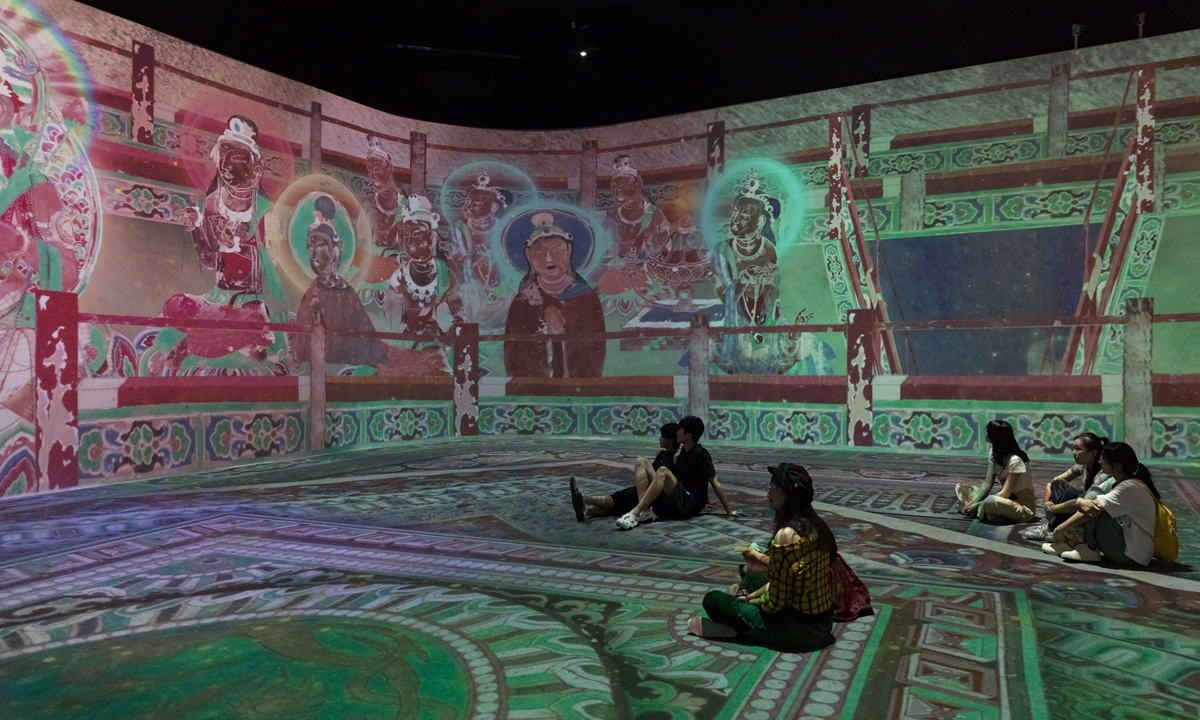
Visitors immerse themselves in a digital exhibition of Dunhuang murals in Hefei, East China’s Anhui Province. Photo: VCG
Preserving while sharing
Xiang Xinshuang, an Intangible Culture Heritage (ICH) expert, told the Global Times that digital and technological means are mostly important to conserve heritages that are "immovable" and also "extremely fragile."
Taking the example of fresco paintings in the Dunhuang grottoes, Xiang said that it is "unavoidable" for cultural heritage pieces to become weathered through the action of natural elements and time, and collecting digital data can help researchers to study the site without worrying about exacerbating such conditions.
Containing 735 caves full of Buddhist art, the Mogao Caves in Dunhuang, Northwest China's Gansu Province, welcome more than 1 million visitors every year. The caves at the UNESCO World Heritage site are gradually aging.
Digital photography, 3D reconstruction, a panorama-tour program, and digitalized film negatives of the caves' cultural relics… Chinese academicians have continued exploring how to make better use of digital technology to make the splendid cultural relics available for the world to enjoy while also ensuring they are preserved for generations to come. Meanwhile, the Dunhuang Academy has engaged in extensive international cooperation, collaborating with organizations such as the Getty Conservation Institute.
More and more Chinese tech giants, including Tencent, have been taking part in works that help cultural heritages come alive. The Digital Beijing Central Axis Project has seen digital technology being used to assist the preparation of Beijing Central Axis' application to be recognized as a world cultural heritage site. According to tech giant Tencent, with the self-developed PCG technology, the scene reconstruction of the 7.8-kilometer core heritage area has been completed, which covers more than 60,000 urban landscape buildings and more than 150,000 trees.
Relying on the blockchain technology and other means, the digital asset of Beijing Central Axis will be shared and enjoyed by ordinary people through online exhibitions and websites.
